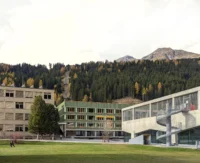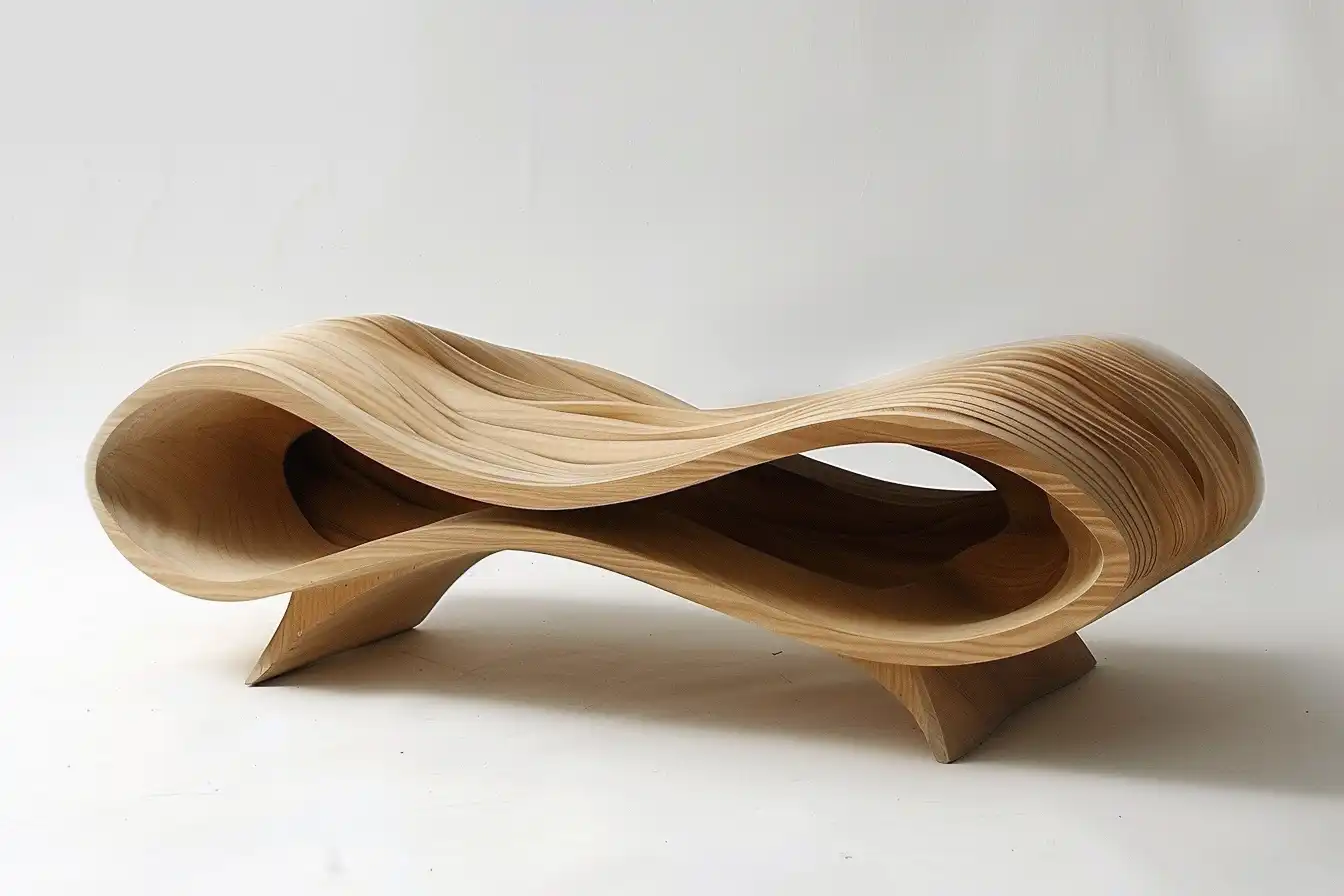Nestled in the heart of the Swiss Alps, the School Center of Davos Platz presents a powerful example of how educational architecture can embrace sustainability, preserve heritage, and accommodate evolving pedagogical needs without resorting to demolition. Designed by CURA Architekten, the project was the winning entry of a competitive selection process in October 2022. Led by architects Otto Closs and Marc Ritz, the proposal sets a new standard for environmentally responsible school design, exemplifying an innovative approach that harmoniously unites preservation and progress.
At a time when educational infrastructure is under increasing pressure to modernize, this project offers a bold counterpoint to the common practice of tearing down aging structures in favor of entirely new builds. Rather than replacing the existing school building, CURA Architekten proposed a concept that centers around adaptive reuse, reducing construction volume, minimizing emissions, and promoting architectural continuity.

A Timber “U” Embracing the Old
The architects’ strategy was defined by one central gesture: placing a large, U-shaped timber structure over the existing school building. This design move allowed the team to retain the historical fabric while simultaneously introducing new learning and administrative spaces that meet contemporary standards for functionality, sustainability, and comfort. The volume of new construction was reduced by an impressive 40%, thanks to the integration of the old building, resulting in a significantly reduced ecological footprint.
The visual language of the addition, crafted almost entirely in wood, echoes the alpine context while distinguishing itself as a contemporary intervention. At once protective and celebratory, the wooden “U” shelters the original building like a canopy, symbolizing the project’s ethos of respect and renewal. This relationship between old and new is not just physical but conceptual—expressing a commitment to architectural responsibility across generations.

Low-Tech Climate Strategies and Energy Autonomy
CURA Architekten’s sustainable ambitions go beyond materials and preservation. The building integrates an integral “LowTech” climate concept, prioritizing passive solutions over mechanical ones. Every learning and working space in the complex benefits from natural cross-ventilation, achieved through the strategic positioning of interior skylights. These operable skylights allow warm air to escape upward during the summer months, while the central atrium acts as a thermal chimney, enhancing air circulation and maintaining comfortable indoor conditions without the need for mechanical air conditioning.
In addition to passive strategies, the building is equipped with advanced energy systems that push it toward energy autonomy. A photovoltaic array installed on the roof produces a significant portion of the school’s electricity on-site, while a geothermal system supplies efficient and sustainable heating throughout the year. Together, these systems dramatically reduce the school’s carbon emissions and operational energy footprint, setting a benchmark for future educational facilities in cold-climate regions.

A Balanced Vision of Heritage and Innovation
According to project lead Marc Ritz, the renovation and expansion reflect a broader architectural philosophy: “We’ve demonstrated that it’s possible to future-proof existing buildings without completely abandoning them.” His partner, Otto Closs, adds: “Our approach balances respect for the existing structure with the requirements of a modern, energy-efficient school.”
This balance is evident in every aspect of the project—from the thoughtful reuse of structural elements to the seamless integration of new programs within the old building envelope. The result is a campus that feels cohesive and contemporary, without erasing the layered identity of the place. Rather than overpowering the existing architecture, the new interventions enhance it, giving students and staff an environment that is both inspiring and grounded in context.
Shaping the Future of Educational Spaces
In an era when climate change and resource scarcity demand more responsible approaches to construction, the School Center of Davos Platz stands out as a prototype for sustainable transformation in educational environments. It proves that modernization does not require starting from scratch and that old structures can, and should, be reimagined—not replaced.
By embedding ecological intelligence into every design decision—from materials and ventilation to spatial planning and energy supply—CURA Architekten have created more than a school. They have created a living framework for the future, one that respects the past, serves the present, and prepares the next generation to thrive in a world that urgently needs sustainable solutions.
Photography: CURA Architekten
- Adaptive Reuse in Architecture
- Architecture Balancing Old and New
- Architecture for Cold Climates
- CURA Architekten Switzerland
- Eco-Friendly School Design
- Educational Building Renovation
- Energy Autonomous Education Center
- Future-Proof Educational Infrastructure
- Geothermal School Heating
- Heritage-Preserving School Design
- LowTech Climate Design
- Modern Timber Architecture
- Passive Ventilation Strategy
- Photovoltaic School Design
- School Center Davos Platz
- School Renovation with Timber
- Sustainable School Architecture
- Sustainable Swiss Architecture
- Swiss Alpine Architecture
- Timber School Building

























































Leave a comment